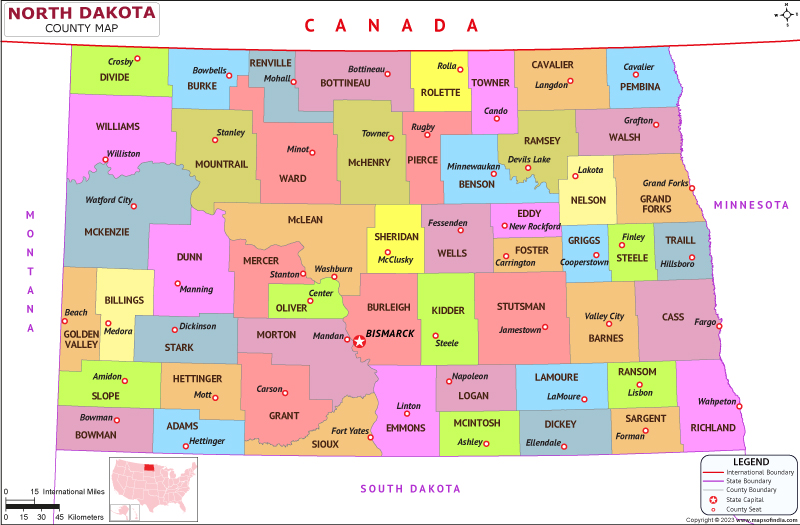Named after the native Dakota Sioux people, North Dakota is a state in the Upper Midwest of the United States. The tallest man-made structure in the Western Hemisphere, the KVLY-TV mast, is located there, and Rugby is thought to be the location of North America's geographic center. Despite being the 19th largest state, North Dakota is the fourth least populous and the fourth most sparsely populated. The only state-owned bank in the United States is The Bank of North Dakota.
Bismarck is the state's capital, and Fargo is its largest city. The US's two fastest-growing cities are both in these two. Beginning in the middle of the 20th century, North Dakota's abundant natural resources became more important for economic growth; into the 21st century, oil extraction from the northwest Bakken formation has been crucial for the state's prosperity.
History
Native Americans arrived in North Dakota many thousands of years ago. The Mandan, Hidatsa, Arikara, Sioux, and Chippewa were the main tribes in the region at the time of settlement. The State got independence when as part of the Louisiana Purchase, the United States bought the majority of North Dakota's territory from France in 1803. In 1818, it signed a convention with Great Britain that extended its northern border to the 49th parallel, giving it the territory in the state's north and northeast. North Dakota and South Dakota were admitted to the Union simultaneously on November 2, 1889, as the 39th and 40th states, with roughly the same borders as the current states.
Culture
Native American tribes, explorers, and immigrants all had a significant impact on North Dakota's history and culture. Powwows have taken place throughout Native American history. Tribes of Native Americans converged as a result of these events. Native American dancers in ceremonial attire perform a variety of dance styles at pow-wows. The promotion, encouragement, and growth of heritage and cultural awareness are important goals for local arts councils.
Language
English is the official language of North Dakota. German is a small minority language. In the English spoken close to the reservations where Ojibwa and Sioux's people reside in North Dakota, a few Indian words are occasionally used. Spanish and Scandinavian languages are also present in North Dakota.
Geography
Soil resources are an important part of North DakotaMineral resources are abundant in North Dakota. Huge quantities of lignite coal are among these mineral resources. Large oil reserves are also present in North Dakota. One of North Dakota's most valuable mineral resources, petroleum, was found there in 1951 and rose to prominence quickly. The development of hydraulic fracturing technologies in the early 2000s made it possible for mining companies to extract massive quantities of oil from the Bakken shale rock formation in the western part of the state. The hilly Great Plains and the northern portion of the Badlands, which are located to the west of the Missouri River, make up the state's western half. Fossil fuels, such as lignite coal, crude oil, and natural gas, are abundant in the area.
| Official name | North Dakota |
| Capital | Bismarck |
| Population | 7.75 lakh |
| Area | 183,125 km² |
| Currency | US Dollar |
| Language | English |
| Religion | Lutherans |
| Major Cities | Bismarck, Fargo, Minot |
FAQs
Q1: What is the official language of North Dakota?
English is the official language of North Dakota?.
Q2: What is the capital of North Dakota?
Raleigh is the capital of North Dakota.
Q3: What is the currency of North Dakota?
The US Dollar is the currency of North Dakota.
Q4: What is the climate in North Dakota?
North Dakota has a continental climate due to which it has a variety of seasonal fluctuations. It regularly gets affected by atmospheric air masses.
Last Updated on: August 23, 2023
